11 Ways to Gain Strength in 5 Minutes: 4 Core Moves, Maximum Impact
Short, focused strength work can be surprisingly powerful. A recent 2024 Sports Medicine review (summarized at reputable trainer education sites) shows that small, well-targeted doses of strength training can produce measurable gains — especially for people who are new to structured lifting or who need time-efficient routines. This article distills that research into a practical 5-minute plan built around four compound moves: a squat, a hip hinge, a push, and a pull. Each move is honored with clear reasons, setup cues, and safe options so you can use the routine at home or in the gym. The goal isn't to chase extremes; it’s to spend every minute on meaningful work with simple progressions you can actually stick with. You’ll find quick science, step-by-step form notes, easy modifications, and a short programming guide so the routine fits into busy weeks. Expect initial changes in strength or confidence in four to six weeks and clearer, measurable improvements in about eight to twelve weeks for most people tracking consistency and load. Think of this as practical self-care that respects your time and body. Try the 5-minute flow three times a week to begin, and we’ll show how to scale up safely when you’re ready. Ready to try one small, honest step? Let’s go through the pieces.
1. Why 5 Minutes Works: The Science Behind the Minimum Effective Dose
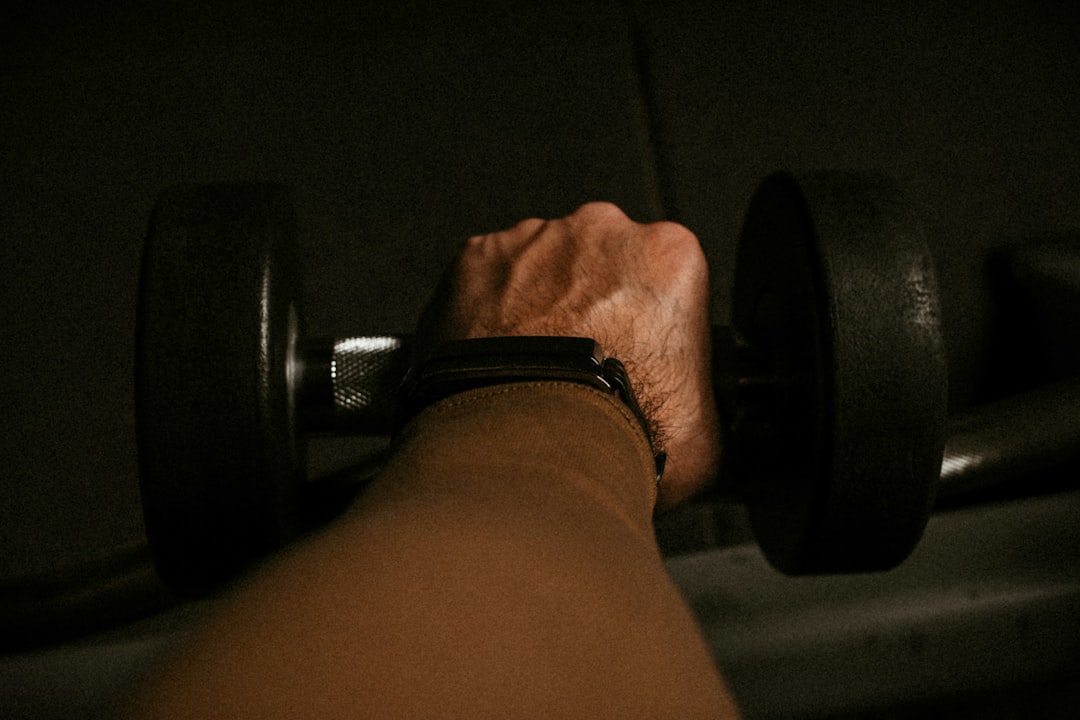
Recent reviews of minimal-dose strength strategies show that targeted, concentrated work can produce meaningful improvements when programmed properly. For adults who are untrained or returning to exercise, single-set full-body approaches have strong support in the literature. The key idea is quality over quantity: pick compound moves that recruit large muscle groups, use the work sets to reach a moderate-to-high effort (often in the RPE 7–9 range), and minimize downtime between meaningful efforts. This doesn't mean every person will see maximal hypertrophy with five minutes; rather, it gives you the smallest consistent dose that still produces strength adaptations when repeated over weeks. Concentrated sessions that eliminate wasted setup, use paired non-competing exercises, and keep rest purposeful help stretch the training effect across a busy week. Evidence also suggests that consistent short sessions can fit into a broader weekly load that delivers cardiovascular and metabolic benefits when combined with other activity. So, the 5-minute rule is less a magic number and more a principle: make the minutes count, be consistent, and use compound moves to maximize impact.
2. Move 1 — Goblet Squat: Why the Goblet Squat Is a Core Choice

The goblet squat is an excellent single-move choice for a compact strength routine because it loads the hips, quads, and core while teaching upright posture. Holding a weight in front of your chest helps counterbalance, so those who have limited ankle mobility or mobility concerns can often find a comfortable, safe squat depth. Functionally, goblet squats translate to easier chair rises and better balance during daily tasks. They also demand enough muscle recruitment to be useful in short sessions; a single set performed close to a challenging RPE will stimulate the nervous system and begin to drive strength gains. For older or deconditioned adults, the goblet squat is forgiving and easy to scale. Place the feet shoulder-width or slightly wider, keep the chest lifted, and sit the hips back with a steady tempo. Because the move engages the trunk and lower limb together, it offers a lot of return for a little time investment — an ideal match for a 5-minute routine built on MED principles.
3. Goblet Squat — Safe Setup, Form Cues, and Modifications
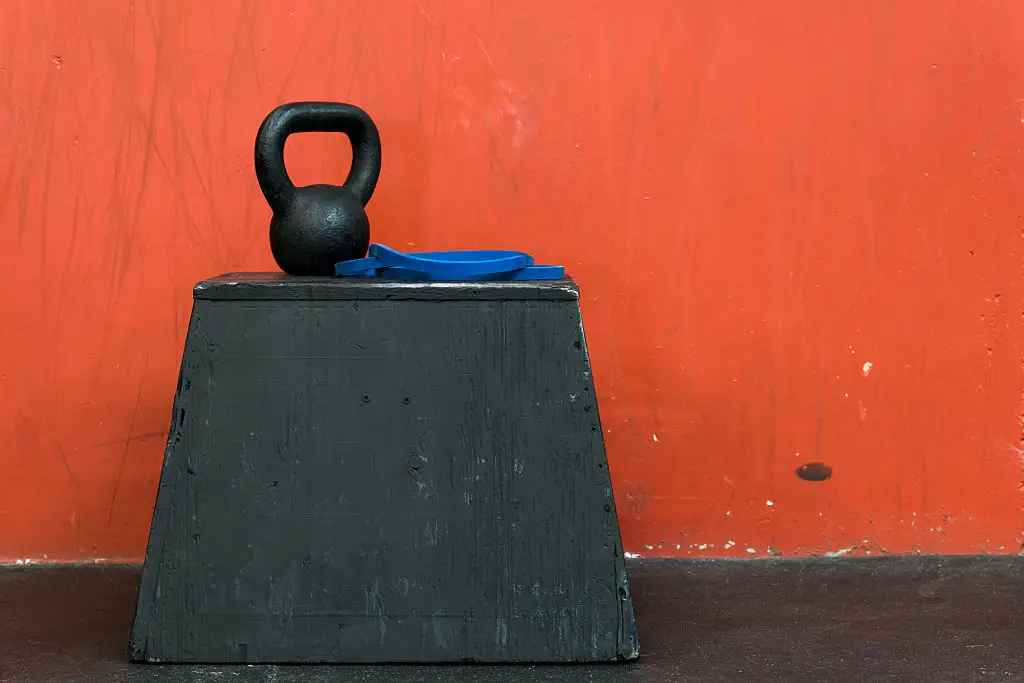
Start with feet roughly shoulder-width and the kettlebell or dumbbell held vertically under your chin. Keep the elbows tucked and the chest open to maintain an upright torso. Push the hips back as you begin the descent. Allow knees to track in line with toes and aim for a depth that preserves comfort and control. For many readers, a box or bench behind you is a helpful guide — lower to the box to build confidence and stand up with control. Short, intentional pauses at the bottom can improve positional strength. If a weighted goblet is too much at first, practice bodyweight sit-to-stands or use a light weight to learn the pattern. To progress, increase load or slow the eccentric phase slightly for more time under tension. Remember to breathe and brace the core for spinal support. These small adjustments keep the movement safe while letting it deliver meaningful stimulus in a brief window.
4. Move 2 — Romanian Deadlift (Dumbbell): Why the Hip-Hinge Complements the Squat

The hip-hinge movement — exemplified here by a dumbbell Romanian deadlift — complements the squat by targeting the posterior chain: hamstrings, glutes, and lower back. Strong hip extension is essential for posture, balance, and everyday tasks like lifting groceries or standing from low seats. In a minimal routine, the RDL is efficient because it works large muscles without requiring heavy axial loading that some people find uncomfortable. It also helps balance the knee-dominant pattern of the squat, which is important for joint health and movement symmetry. When paired with a goblet squat, this pull-style hip hinge ensures your legs and posterior chain get a more complete stimulus during short sessions. Use a moderate weight you can control for 6–10 reps, and focus on the hinge pattern rather than depth. For older adults, teaching the hinge with light weight and a slow tempo first will build confidence and motor control before adding load.
5. Romanian Deadlift — Setup, Form Cues, and Regressions
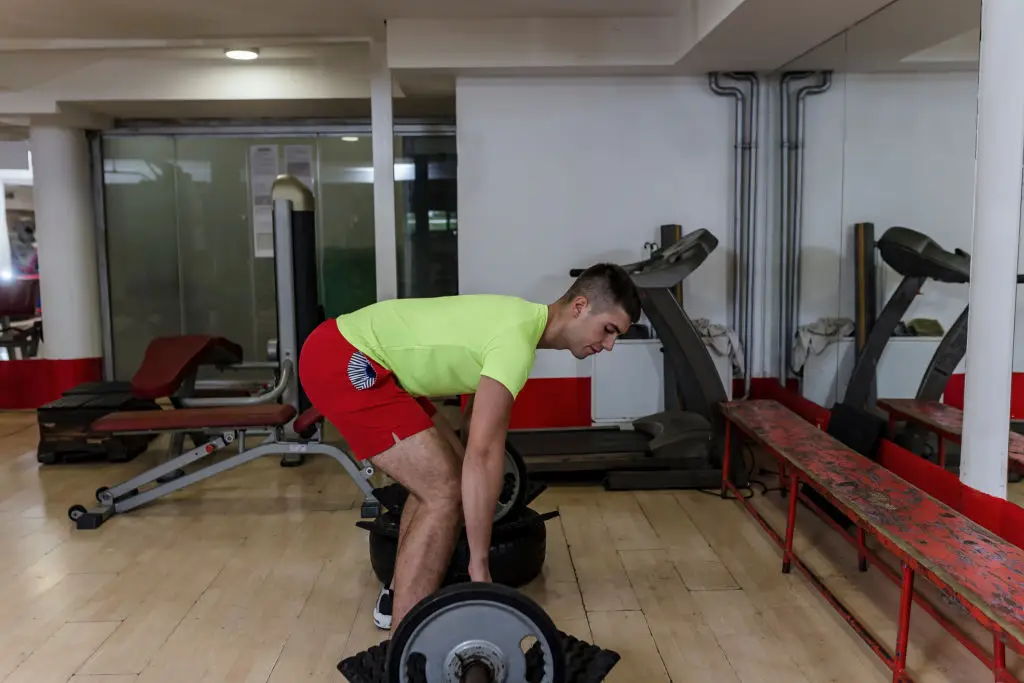
Stand tall with a dumbbell in each hand or a single heavier dumbbell held in front; keep a slight bend in the knees. Hinge from the hips, pushing them back while maintaining a neutral spine. Your chest stays lifted and the weight travels close to the legs. Stop when you feel a strong stretch in the hamstrings or when your torso reaches a safe forward angle. To return, drive the hips forward and squeeze the glutes. If balance or hamstring flexibility is limited, perform the move with lighter load, higher starting position, or use a kettlebell deadlift pattern where the weight sits between the feet. Single-leg RDLs are a progression that adds balance demands and helps correct side-to-side imbalances. Choose a regression or progression that keeps technique clean. That way the posterior chain is trained effectively without sacrificing safety in a brief five-minute block.
6. Move 3 — Incline Push-Up: Why an Upper-Body Push Is Essential

Upper-body pushing strength matters for daily functions like pushing doors, rising from chairs, or carrying items. An incline push-up is a friendly, scalable push that reduces shoulder load compared with the floor version while still training the chest, shoulders, and triceps. For many readers, especially those building back into strength training, inclines provide a safer progression path. They also pair well with rows in a short circuit because they are non-competing in terms of range of motion and can be done quickly with clear effort. Set hands on a sturdy surface like a bench or countertop at a height that feels challenging but manageable. Keeping a braced core and neutral neck reduces compensatory patterns. As tolerance grows, you can lower the incline gradually until you reach full push-ups or add a small weighted vest. Because incline push-ups are versatile and low-equipment, they fit cleanly into a 4-move, 5-minute flow built for consistency.
7. Incline Push-Up — Setup, Form Cues, and Modifications
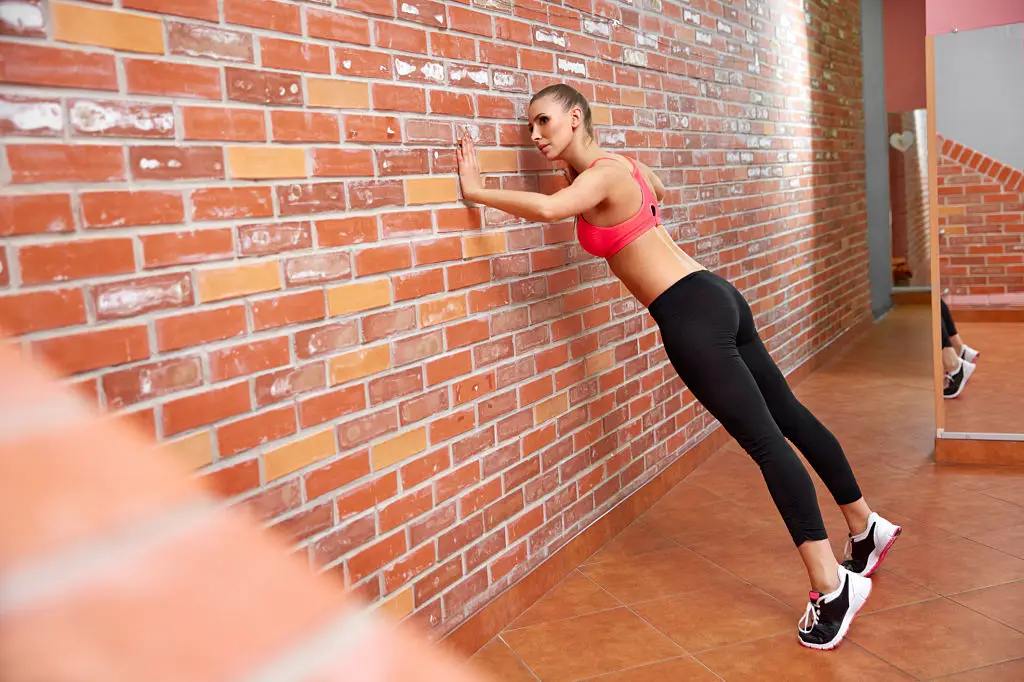
Place your hands shoulder-width on a secure surface and step the feet back so your body forms a straight line from head to heels. Keep the shoulders away from the ears and pull the ribs slightly down to avoid overarch in the lower back. Lower the chest toward the surface with control and press back up while breathing. If the angle is too steep, move your hands to a higher surface like a wall or kitchen counter to make the movement easier. To progress, lower the surface gradually or add a slow eccentric (3–4 seconds down). If wrist discomfort occurs, try a fist grip or use push-up handles to keep the wrist neutral. For shoulder-sensitive clients, narrowing hand placement slightly or focusing on scapular control before full repetitions reduces strain. These simple options let you keep the push pattern effective and safe, even within short sessions.
8. Move 4 — One-Arm Dumbbell Row: Why a Pull Pattern Completes the Routine
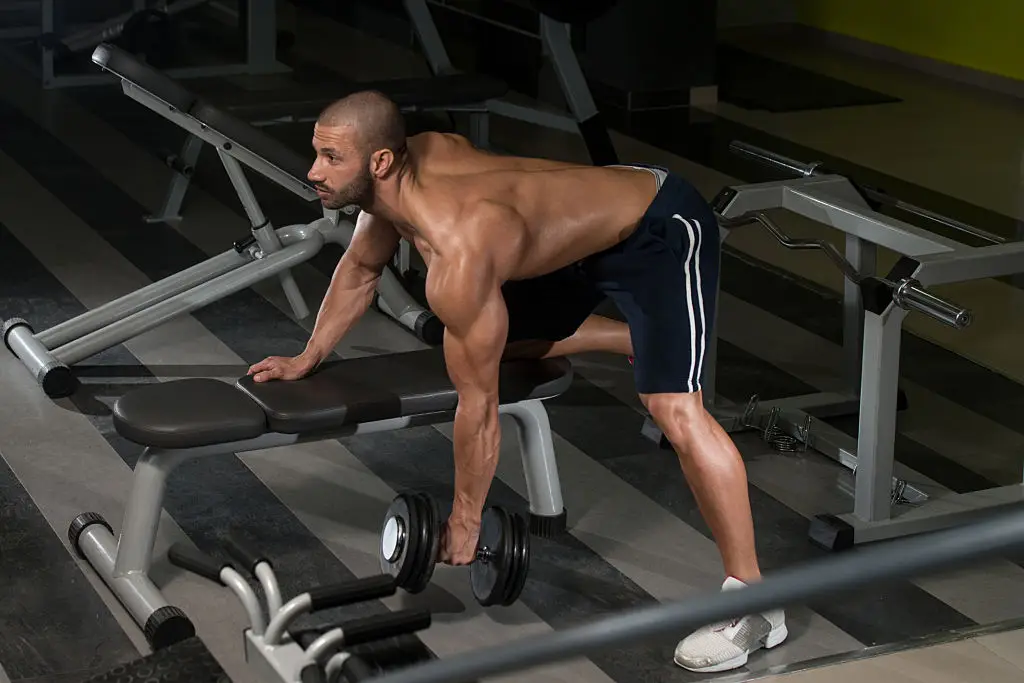
A unilateral row trains the upper-back, lats, and posterior shoulder, which supports posture and counters the forward-leaning patterns many of us develop from sitting. Using a one-arm dumbbell row also forces core bracing and helps address side-to-side imbalances. In a compact routine, the row is a direct complement to the push movement so your shoulders and upper torso receive balanced attention. Set up with one hand braced on a bench or sturdy surface and pull the weight toward the hip, keeping the elbow close to the body. Aim for a controlled pull and a slow lowering phase to maximize muscle recruitment in fewer reps. This move is efficient because it simultaneously trains pulling strength and core stability, which improves daily function and posture. It fits naturally into a 4-move set that targets major movement patterns in a short time.
9. One-Arm Row — Setup, Form Cues, and Accessible Options
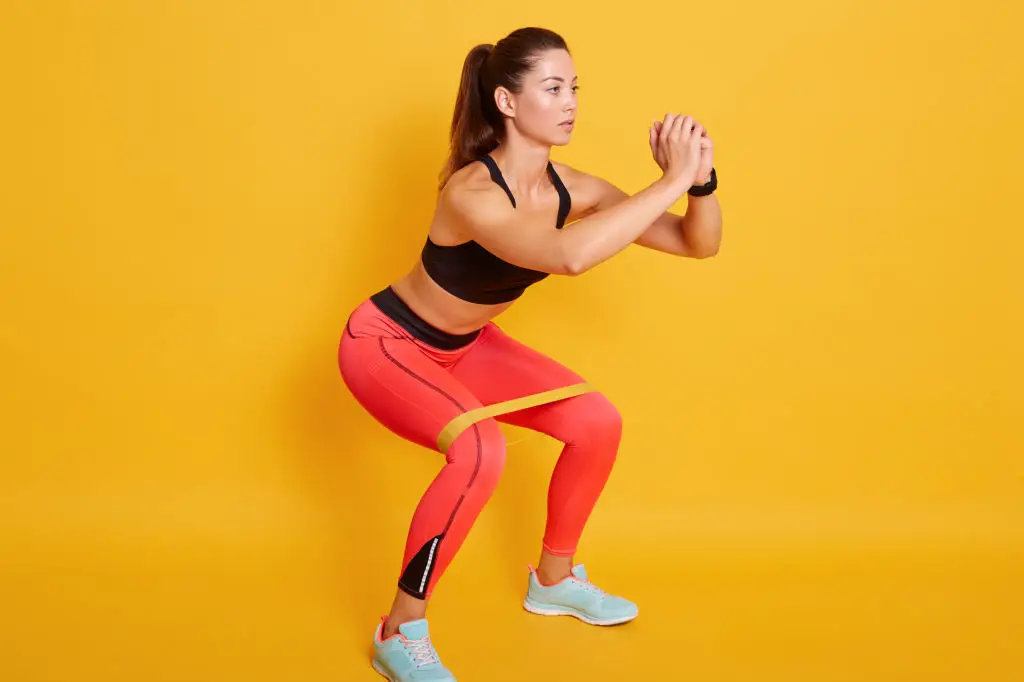
Place one knee and the same-side hand on a bench for support or perform the row standing with a split stance for stability. Keep the spine long and avoid rotating the torso; think of pulling the elbow back to tuck the shoulder blade before the arm. Squeeze the shoulder blade at the top without shrugging. To reduce load or equipment needs, a sturdy resistance band attached to a fixed point can provide a similar pulling challenge while keeping motion controlled. Seated cable or band rows are excellent regressions for those with balance limitations. For progression, increase weight, slow the eccentric, or perform tempo rows where the lowering phase is emphasized. These variations let you keep a strong pulling stimulus even within a brief training window so you get balanced, practical results over time.
10. Programming & Timing: How to Fit 4 Moves into 5 Minutes
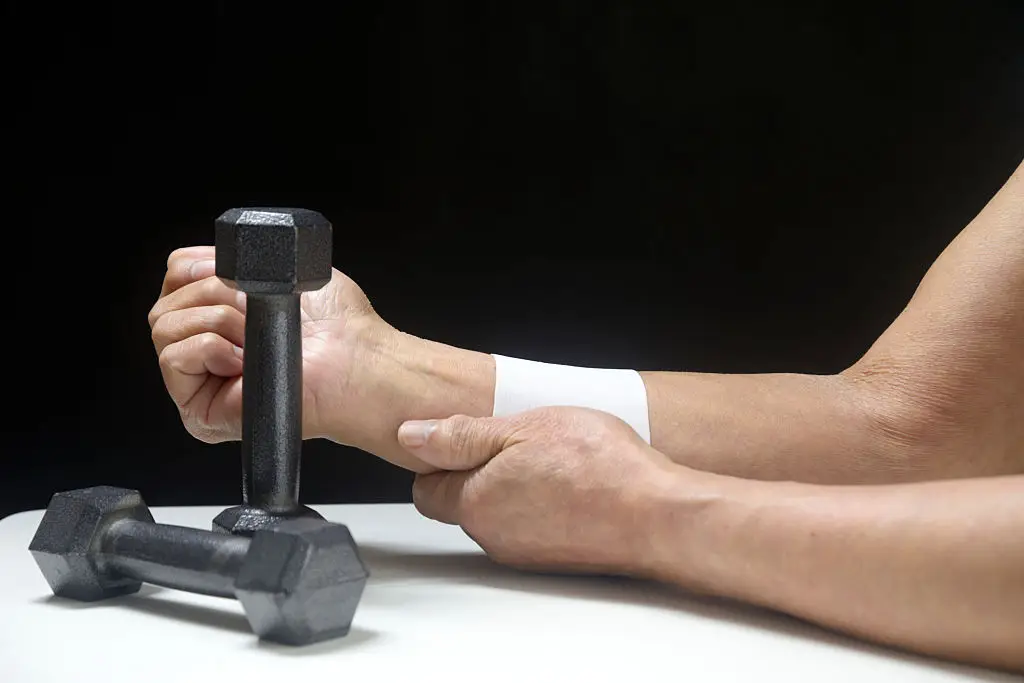
A simple, research-friendly way to structure five minutes is an EMOM (every minute on the minute) or a compressed circuit. Example EMOM: Minute 1 — Goblet squat (6–8 reps), Minute 2 — RDL (6–8 reps), Minute 3 — Incline push-up (6–10 reps), Minute 4 — One-arm row each side (4–6 reps per side, alternate), Minute 5 — Repeat your weakest movement or use it for mobility and breathing work. Aim for an RPE of 7–9 on work sets so each minute is challenging but not injurious. If you prefer a continuous circuit, perform one set of each move back-to-back, rest 30–60 seconds, and repeat until 5 minutes elapse. Weekly frequency matters more than session length for most beginners — start with three short sessions per week and add a fourth as recovery allows. The 2024 MED evidence suggests that single-set, full-body approaches can be effective for new trainees when repeated consistently. Keep a training log to record weight and reps; that small behavior makes progression obvious and motivating.
11. Progressions, Recovery, and Tracking: How to See Real Results

Real, measurable gains take steady adherence. Expect early neural improvements and small strength changes within four to six weeks, with clearer strength and functional improvements by eight to twelve weeks if you maintain consistency. Track what matters: weight used, reps performed, RPE, and how you feel after sessions. If you’re consistently able to add reps or increase load while keeping form, you’re progressing. Recovery matters as much as minutes under tension — prioritize sleep, protein intake, and two days of rest for the same muscle groups if you’re new to lifting. Simple recovery habits like short walks, gentle stretching, and hydration enhance adaptation. When progress stalls, add small volume increments: a second short set, an extra weekly session, or a tempo change. That way you maintain the MED ethos — minimum effective dose — while still scaling results over months. Celebrate small wins and lean into consistency; cumulative minutes add up to meaningful strength.
Takeaway: Small, Smart Effort That Fits Real Life

A five-minute strength routine built from four compound moves is not a shortcut to instant transformation. It is, however, a realistic and research-supported strategy for busy people who want honest gains without burnout. The 2024 review summarized by trusted trainer education resources confirms that minimal-dose approaches — when focused, progressive, and consistent — produce measurable strength changes for many adults, especially those who are new or returning to structured training. Use the goblet squat, a hip hinge like the RDL, an incline push-up, and a one-arm row as your core. Learn safe setup and regressions, track load and effort, and aim to repeat the five-minute flow multiple times weekly. Within four to six weeks you’ll likely notice small but meaningful differences; within eight to twelve weeks the changes become more obvious both in how you move and how daily tasks feel easier. If you want an easy starting plan, try the EMOM structure outlined above three times a week for a month, then reassess. Increase reps, weight, or weekly frequency gradually as form and recovery allow. This approach honors your time and your body without making inflated promises. Strength is built from many small, consistent steps. By making five minutes intentional, you create a practice that fits real life and pays real dividends over time.
